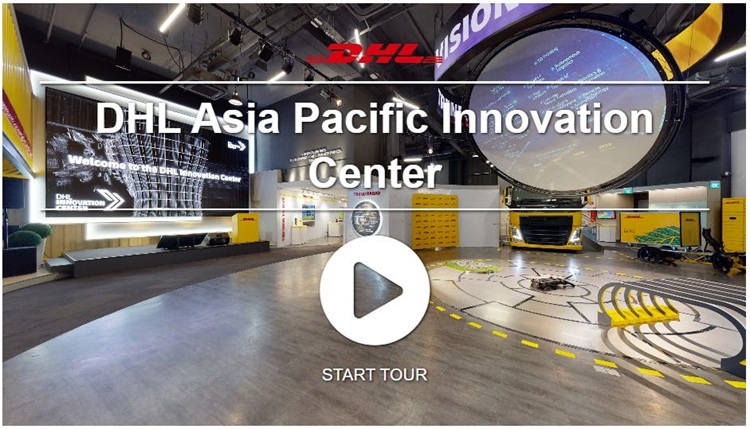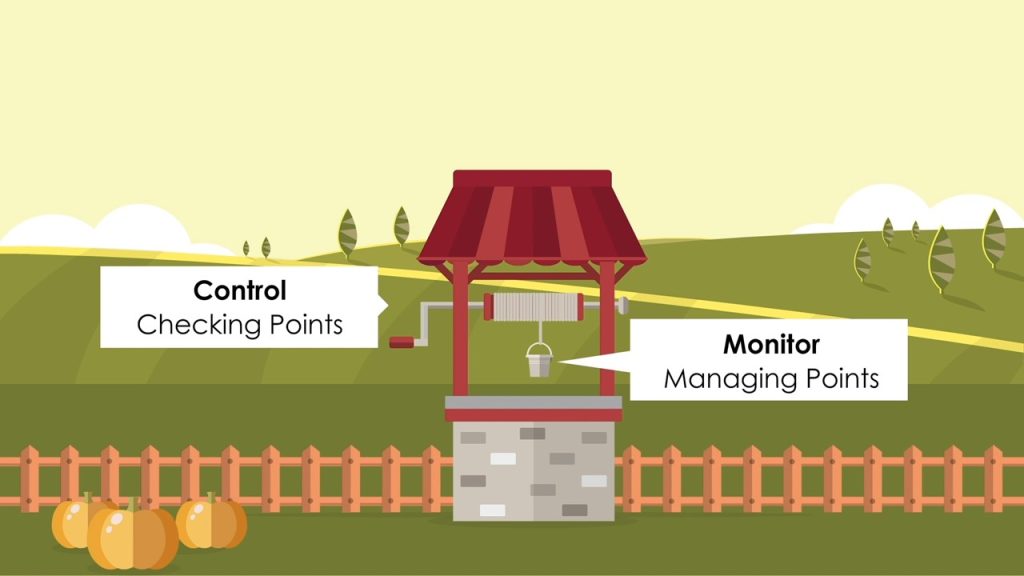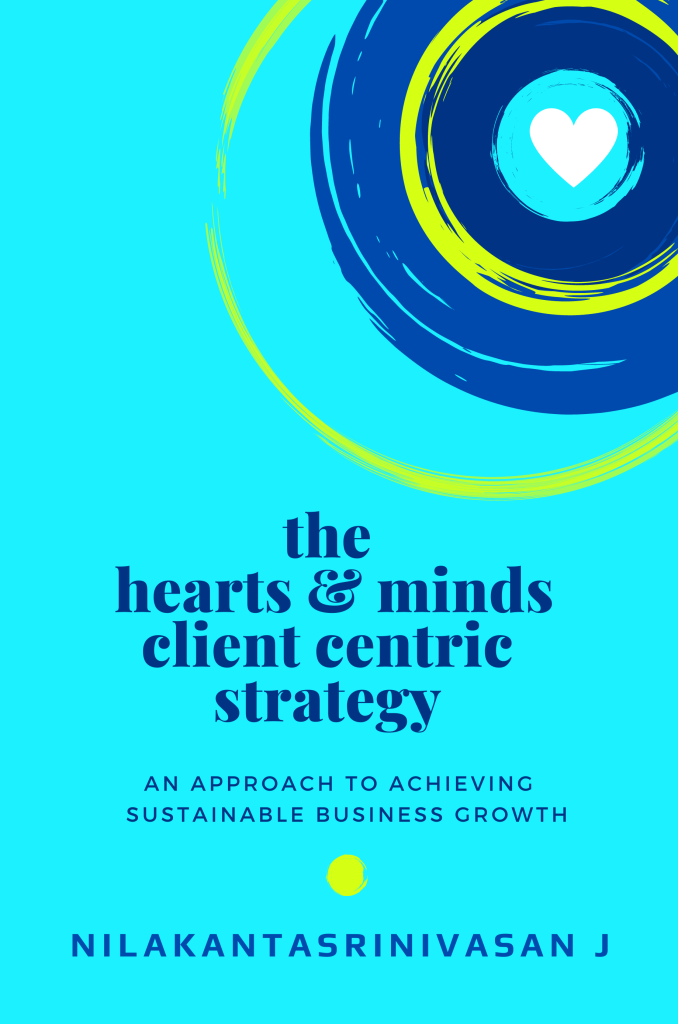Learn to create SOAR Matrix with live business examples
In today’s high-stakes B2B landscape, predicting change isn’t enough — leading it is the mandate. Yet too often, most organizations approach strategic planning like a checklist driven activity.
Further, most strategic planning processes lay too much emphasis on aspects such as threats, weaknesses and risks. While it is important to evaluate the deficiencies and challenges, overly emphasizing on these leads to the creation of defensive strategies.

That’s where the SOAR Matrix flips the narrative.
SOAR—short for Strengths, Opportunities, Aspirations, and Results—is a strategic planning framework built for businesses that want to scale with intention and impact. Unlike its better-known cousin SWOT, SOAR doesn’t dwell on what’s broken—it amplifies what works and focuses on what’s possible.
It’s not just another planning tool; it’s a mindset shift for teams obsessed with client success, long-term value creation, and cross-functional alignment.
What is the SOAR Framework?
- Strengths: What the organization does well—core competencies, assets, and achievements
- Opportunities: External possibilities for growth, innovation, or market expansion
- Aspirations: Vision for the future—what the organization wants to become
- Results: Tangible outcomes that measure success and progress toward aspirations
Which organizations use SOAR Matrix?
There are many organizations that use SOAR matrix in their strategic decision making process. For example, Visa, John Deere, British Aerospace (BAE systems), US Army and many such large enterprises regularly use SOAR analysis. Many large consulting firms like McKinsey, Deloitte, PWC, Accenture, KPMG, etc, also this framework for their engagements.
Why leaders should use SOAR more regularly?
SOAR is useful because it doesn’t just analyze—it inspires. It’s built for leaders and teams who want more than situational diagnosis. By focusing on strengths and possibilities, SOAR aligns stakeholders, drives engagement, and fosters a growth mindset across organizations.
SOAR need not be used only a year during strategic planning. It should be part a leader’s tool-kit and should be during every day decision making. Here’s why it is a powerful tool for leaders:
- Encourages forward-thinking and innovation rather than deficiency mindset
- Builds shared vision and emotional commitment of the team
- Facilitates goal-setting rooted in core capabilities
- Strengthens organizational culture and collaboration towards a winning spirit
- Simple storytelling framework for leaders to influence stakeholders
When should B2B firms use SOAR?
SOAR is especially valuable in the following growth-critical scenarios:
- Cross-functional alignment for long-term goal
- Launching new product lines based on client feedback
- Entering new geographies or verticals with client co-creation
- Aligning cross-departmental teams with strategic account goals
- Conducting quarterly business reviews or renewal planning
- Repositioning brand for premium, value-based growth
- Designing CX programs tied to sales KPI
- Organizational transformation or culture change
- Leadership retreats and strategic offsites
How to Conduct a Client-Centric SOAR Analysis?
Conducting a SOAR analysis isn’t really difficult. All you need is good facilitation skills.
- Gather key stakeholders from diverse functions—strategy, marketing, operations, leadership, etc.
- If needed, you can involve key client decision makers too
- Host a facilitated workshop
- Ask 3 questions:
- What do we do best?
- What future excites us?
- What success looks like?
- Draft insights for each quadrant of the SOAR Matrix
As a part of our strategic engagements with our clients, we facilitate and help our clients develop SOAR matrix.
TESLA and NVIDIA Examples
Here are a few SOAR matrix examples of Tesla and NVIDIA that I have created for you to understand the concept better.
SOAR Matrix Example 1 : Tesla’s Entry into India
Here’s how Tesla’s move into India can be framed with a growth lens.
Strengths
- Globally recognized brand with premium EV tech
- Experience in setting up Gigafactories
- Advanced autonomous systems and battery innovation
- Charismatic leadership with global influence
Opportunities
- India’s EV market projected to reach ₹35 lakh crore by 2035
- Government incentives like FAME-II and import duty concessions
- Rising urbanization and affluent middle class
- Potential for Indian Gigafactory as Southeast Asia export hub
Aspirations
- Become the leading premium EV brand in India
- Build a Gigafactory with 30% local value addition
- Launch an affordable EV tailored for Indian consumers
- Revolutionize India’s EV infrastructure and perception
Results
- Launch India-specific EV model by 2026
- Onboard 8,000 EVs annually under new import quota
- Achieve ₹7,500 crore turnover within five years
- Maintain NPS score above 70% across service touchpoints
SOAR Matrix Example 2 : NVIDIA’s AI Chip Strategy
NVIDIA’s dominance is built on a powerful combination of hardware innovation, software integration, and ecosystem control. However, rising competition from AMD, Intel, and custom silicon players (like Google’s TPU) is prompting NVIDIA to accelerate its roadmap and deepen client entrenchment.
Strengths
- Market leadership with 70–95% share in AI accelerators
- Flagship chips (H100, A100) widely adopted by tech giants like Google, Microsoft, and Amazon
- Proprietary CUDA software ecosystem creates developer lock-in
- High gross margins (~78%) and strong brand equity
Opportunities
- Surging demand for generative AI and LLM training
- Expansion into inference chips and edge AI devices
- Strategic partnerships with cloud providers and enterprise AI platforms
- Growth in simulation, robotics, and Omniverse applications
Aspirations
- Sustain innovation leadership by releasing new architectures annually
- Become the backbone of global AI infrastructure across industries
- Lead ethical AI development and energy-efficient chip design
- Expand AI Enterprise software adoption across Fortune 500 clients
Results
- Reduce energy consumption per training cycle by 30% over 3 years
- Launch next-gen chip architecture (post-H100) by Q2 2026
- Achieve 85%+ market share in inference chips by 2027
- Grow AI Enterprise revenue by 40% YoY
Do you need professional help in this area? Contact us
#nilakantasrinivasan-j #canopus-business-management-group #B2B-client-centric-growth #client-centric-culture #Tesla #NVIDIA #SOAR-Matrix #Intel #Google
In today’s hyper-competitive B2B landscape, client-centricity isn’t just a buzzword—it’s a growth engine. But embedding it into the fabric of your organization takes more than good intentions. It requires bold strategies, real-world experimentation, and a willingness to embrace both the upsides and the trade-offs. Here are five distinctive approaches that leading companies use to put clients at the center which foster client-centric culture —along with the lessons they’ve learned along the way.
1. Co-Create the Client Journey—Don’t Just Map It
Forget static journey maps built in boardrooms. The real magic happens when clients help design the experience themselves. DHL’s Innovation Centers are a masterclass in this approach. By inviting clients into co-creation workshops, DHL has developed cutting-edge logistics solutions—from parcelcopter drones to AR-powered warehouses. These sessions aren’t just about feedback—they’re about partnership, trust, and shared innovation.
Co-creation builds loyalty and unlocks solutions you’d never find alone. Clients feel heard, valued, and invested. But it’s not without its challenges. Co-creation demands time, facilitation skill, and a tolerance for ambiguity. Not every client is ready—or equipped—to ideate at this level, and not every idea will be viable. Still, when done right, the payoff is transformative.

2. Train Every Team in Client Empathy
Client-centricity isn’t the job of sales alone. When finance, ops, and engineering understand client pain points, the entire organization becomes more responsive. Salesforce’s “Customer360” enablement program immerses cross-functional teams in real client stories. Through empathy labs and role-play exercises, even backend teams learn to “walk in the client’s shoes.” The result? Products and processes that reflect real-world needs—not internal assumptions.
The benefit is clear: empathy drives relevance. Teams become more agile, more aligned, and more attuned to what clients actually care about. But the downside is that empathy training can feel abstract or performative if not tied to real decisions. Without leadership reinforcement and follow-through, it risks becoming a one-off workshop rather than a cultural shift. The key is to embed empathy into daily rituals—not just annual events.
3. Measure What Matters to Clients
Vanity metrics like clicks and impressions don’t drive growth. Client-centric companies track what truly matters—like how fast clients see value or how well their goals are met. HubSpot, for example, ditched superficial KPIs in favor of metrics like “Time to First Value” and “Customer Success Score.” These helped pinpoint onboarding friction and improve retention—leading to stronger client relationships and higher lifetime value.
With right metrics, you get clarity on what drives real impact. These metrics align internal teams around client outcomes, not internal outputs. But the challenge lies in data complexity and cultural inertia. Shifting from traditional KPIs to client-centric ones requires retooling dashboards, retraining teams, and sometimes confronting uncomfortable truths. It’s worth it—but it’s not plug-and-play.
4. Embed Living Client Personas in Every Decision
Static personas belong in dusty decks. The best companies use dynamic, data-driven personas that evolve with client behavior—and influence every strategic move. IBM’s Automatic Persona Generation (APG) system creates real-time personas based on client data. These aren’t just marketing tools—they’re embedded into product development, pricing, and campaign design. It’s empathy at scale, powered by analytics.
Living personas help teams anticipate needs, personalize experiences, and make faster, smarter decisions. But there’s a trade-off: data dependency. If your inputs are flawed or biased, your personas will be too. And over-reliance on algorithms can dilute the human nuance that clients value. The best approach blends data with dialogue—quantitative insight with qualitative empathy.
5. Turn Clients into Innovation Partners
The most client-centric companies don’t just serve clients—they innovate with them. Amazon’s Lab126 invites select clients and partners to co-develop products like Kindle and Echo. Early feedback shapes design and functionality, making clients feel like collaborators—not just consumers. This model deepens trust and accelerates market fit.
With this strategy, you reduce guesswork and build solutions clients actually want. Innovation becomes faster, more targeted, and more inclusive. But the risk is scope creep and misalignment. Not every client idea fits your strategy, and not every partnership scales. Managing expectations—and protecting core vision—is essential. Still, when clients become co-innovators, the relationship transcends transaction.
Client-centricity isn’t a department—it’s a mindset!
These five strategies show how leading B2B firms embed it across every touchpoint, metric, and decision. Each approach comes with its own rewards and realities. But together, they form a blueprint for growth that’s grounded in empathy, powered by data, and shaped by collaboration.
Whether you’re in Manufacturing & Industrial, IT, SaaS, Tech, ITES, logistics, or consulting, the path to relevance starts with one question:
“What would our clients build—if they were in our shoes?”
Do you need professional help in this area? Contact us
#nilakantasrinivasan-j #canopus-business-management-group #B2B-client-centric-growth #client-centric-culture #DHL
Did you know using emojis improves business results!
We celebrate World Emoji Day today – July 17.
The first emoji was created in 1999 by Shigetaka Kurita, a Japanese designer working for the mobile communications company NTT DoCoMo. He created emojis to make digital communication more expressive and intuitive. He designed a set of 176 pixelated icons—each just 12×12 pixels. Since then, Emojis have now evolved.

Shigetaka Kurita (Source:CNN)
Have you ever wondered the role of Emoji in humanizing business communications in this digital age?
In a landscape dominated by metrics, data dashboards, and ROI spreadsheets, the humble emoji now plays a prominent role in the world of B2B messaging. What began as a millennial shorthand has quietly evolved into a strategic tool for client-centric growth professionals, seeking to infuse humanity, clarity, and nuance into their communications.
The Shift: From Formal to Feelings
B2B messaging has long been formal, brimming with jargons, and dense proposal decks. But today’s millennial client is increasingly digital, discerning, and emotionally attuned. As a result, Emojis are now a shorthand for tone, intention, and empathy. A simple or can soften the tone, signal positivity, or break the monotony of corporate dialogue.
This shift isn’t about being casual or cool, it’s about being emotionally intelligent.
Emojis also save time!

The Emoji Business Impact
Do Emoji’s really make any difference when it comes to business results?
- Emojis function like punctuation with personality. They clarify sentiment, flag urgency, reducing ambiguity in communication.
- Studies show that emails and social posts with relevant emojis often outperform their plain-text counterparts in open rates and click-throughs rates. For example,
- Email open rates increase by up to 29% when emojis are used in subject lines.
- Social media posts with emojis see 25% to 60% more engagement on Twitter, Instagram and Facebook
- Push notifications with emojis are opened 85% more often than those without

Tips for Usage
- Use sparingly for impact — avoid overloading messages.
- Match tone to context: What feels engaging in a Slack ping may feel off in a proposal.
- Emojis can humanize insights: try summarizing performance with 3 emojis.
- Keep cultural sensitivity in mind — meanings vary globally.
- A/B Test Subject lines with emojis to evaluate impact.
- Create Brand Emoji Guidelines to ensure consistency across departments and regions.

Using Emojis across Platforms
Emails (Outlook, Gmail, etc.)
Windows Emoji Picker
- Shortcut: Press
Windows + .(period) orWindows + ;(semicolon) - Works in Outlook, Gmail (browser), and most text fields
- Lets you search and insert emojis instantly
Outlook Add-ins
- Go to Home > Get Add-ins
- Search for “Emoji” and install add-ins like Emoji Keyboard or EmojiOne
- Adds a toolbar for quick emoji access 43dcd9a7-70db-4a1f-b0ae-981daa16205 Click Here
Excel
Keyboard Shortcut
- Use
Windows + .to open emoji picker directly in a cell 43dcd9a7-70db-4a1f-b0ae-981daa162054
Insert as Image
- Use
Insert > Picturesto add emoji images - Or use the
IMAGE()function with emoji URLs:
=IMAGE(“https://emoji.beeimg.com//64/twitter”)
PowerPoint
Insert Tab
- Go to
Insert > Emoji(or useWindows + .) - Emojis appear in full color and scale well for slides43dcd9a7-70db-4a1f-b0ae-981daa162054
Symbol Dialog
Insert > Symbol > More Symbols- Choose font: Segoe UI Emoji
- Browse and insert emojis manually43dcd9a7-70db-4a1f-b0ae-981daa162054

Cool Emoji Ideas to implement
Emoji-as-KPI Experiment
- Sum up last quarter’s performance using just 3 emojis
- Use this to open dialogue around storytelling with dashboards. Invite your team to share their emoji KPIs!

Build Your B2B Mood Board
- Use emoji palettes to enrich communication internally and externally.
- Conduct Emoji usage training programs
- Conduct surveys with emojis instead of rating scales
- Use emojis to give feedback after reviews
- Capture employee sentiments with emojis
- Have employees identify themselves with a emoji persona

As B2B grows more human-centric, the rise of emojis signals an evolution — not a dilution — of professional communication. These tiny symbols remind us that behind every metric is a person. And in a noisy world, sometimes all it takes is a to spark a meaningful connection.
#nilakantasrinivasan-j #canopus-business-management-group #B2B-client-centric-growth #Emoji-Day #Shigetaka-Kurita #NTT-DoCoMo
Client Centric Strategies for Success: Lessons from Bisk Farm’s Growth
Many of our stories are about large brands or B2B organizations and their growth strategies.
This time, we have curated this piece about an Indian business growth story that faced challenges initially but overcame them successfully. If you are from the eastern part of India, it is very likely that you have seen confectionery from the brand Bisk Farm.

Bisk Farm is the flagship brand of SAJ Food Products, a FMCG company headquartered in Kolkata. It was established in 2000 by Krishnadas Paul, when he was 60. However, he was not a newbie to FMCG, as he had been a distributor for Nestle, Dabur, and Reckitt & Colman for over 30 years.
In 2000, SAJ pioneered the introduction of sugar-free biscuits in India. Long before health-conscious options became popular in the biscuit industry, SAJ Food Products set a precedent. Their sugar-free biscuits paved the way for healthier snacking, inspiring even industry giants like Britannia to follow suit in subsequent years. But it was not a cake walk!
It was a bold path for new market entrants. Growing a new product in a new market is always an uphill climb. That was the first speed breaker for SAJ Foods for the following reasons:
- Creating sugar-free biscuits that taste as delightful as their sugary counterparts isn’t easy. The challenge lay in ensuring that the biscuits remained crispy, crumbly, and satisfying, even without the usual sugar rush.
- Alternative sweeteners used in sugar-free products often come at a higher cost than regular sugar. Balancing affordability with quality was a bottleneck.
- Sugar-free products must adhere to stringent regulations regarding labeling, claims, and permissible ingredients.
- Convincing consumers to embrace sugar-free options required a hard marketing push. Many associate “sugar-free” with blandness or sacrifice.
- The biscuit market is fiercely competitive, with established players like Britannia, ITC, and Parle
SAJ Food Products had to reframe the narrative, emphasizing health benefits and appealing to health-conscious consumers. They had to carve a niche for themselves with a sugar-free range as a unique proposition.
Despite their best efforts, SAJ failed with their sugar-free products due to the following reasons:
- Distribution Network: You would know that in the FMCG, the presence of a deep and active distribution network is vital. But Bisk Farm’s network had new and inexperienced distributors. This led to poor channel penetration and intermittent supply issues. As a result, the biscuits struggled to reach a wider audience.
- Overcoming Skepticism: Consumers didn’t associate sugar-free biscuits with a delightful taste. A broader marketing campaign and deeper pockets were needed for this.
- Britannia’s Dominance: Taking on Britannia, a formidable player in the Indian biscuit market, was no small feat. Britannia’s established presence posed a significant challenge.
After 4 years of hardship, in 2004, Bisk Farm encountered losses amounting to Rs 15 crore. For a start-up, this was a big number. Krishnadas and his children made one last attempt to review the company, and here are the strategic actions they took to rise from the ashes:
- Regional Focus: They recognized the importance of regional appeal. So instead of targeting pan-India distribution, they chose to go regional. In doing so, they focused on Eastern India and introduced products tailored to local tastes. This shift in approach, coupled with targeted marketing efforts, proved pivotal in revitalizing sales and establishing a strong foothold in the region.
- Differentiation and Diversification: With the growing presence of competitors like Britannia, SAJ Food Products understood the need for diversification beyond biscuits. Bisk Farm deliberately carved a niche in the premium segment. This led to the launch of Just Baked outlets, offering a range of bakery products and snacks. By expanding its product portfolio and regional retail presence, the company not only mitigated competitive pressures but also tapped into new revenue streams, contributing to its overall growth.
Free Download
Get your copy of E-Book “The Hearts & Minds Client Centric Strategy” on how to achieve sustainable business growth . It contains cases, examples, detailed implementation approach along with ideas to achieve sustainable growth, especially for B2B firms. (Pages : 51)
Merely by pursuing these 2 strategies, they were able to turn around and come out of their financial situation.
Below are the two important takeaways for any organization, B2B or B2C, that wants to achieve consistent growth and tap its full potential.
Market to Product/Service Fit
It is very important to create a good fit between your products/services and target customer segments. For this to happen, you will need to understand the customer pain and the unique value proposition that your products/services offer. In order to achieve a good fit, you may need to take tough business calls, such as narrowing the product range, features, and geography. At first, it might look very narrow and wouldn’t resonate with your larger vision. For Bisk Farm, selling just in the eastern region was a tough call, but it helped achieve their larger vision of becoming a complete food company in the long run.
Customer Insights
Due to the complex market dynamics in today’s VUCA world, it is very important for you to constantly gain customer/client insights and continuously fine-tune your product/service to market fit. Just doing C-Sat surveys and publishing scores wouldn’t help. Throughout its journey, SAJ Food Products has demonstrated a keen understanding of customer preferences and market dynamics. By leveraging insights into regional tastes and preferences, the company tailored its product offerings and marketing strategies to resonate with local consumers. So this can lay the foundation for sustained growth and market leadership.
Subsequently, SAJ Food Products pursued an aggressive expansion strategy. By investing in new production facilities in strategic locations like Siliguri and Bangalore, the company increased its manufacturing capacity and strengthened its distribution network. This facilitated its expansion into previously untapped regions. They kept the prices constant at Rs 10 and expanded to small pockets in Tamil Nadu and Andhra Pradesh with 1700 distributors, later expanding into 19 states as a pan-India brand. By 2023, Bisk Farm clocked a revenue of Rs.2,100 Cr and became the 4th largest player in India with a 4% market share.
#nilakantasrinivasan-j #canopus-business-management-group #B2B-client-centric-growth #Bisk-Farm #SAJ-Food-Products

In a client-centric business growth strategy, effective meetings are indispensable. They ensure that client needs, expectations, and feedback are clearly communicated and understood. By structuring meetings to be concise, goal-oriented, and inclusive, businesses can foster stronger client relationships and trust. Effective meetings not only align internal teams with client objectives but also enable proactive problem-solving and innovation. Regular, transparent communication through well-executed meetings demonstrates commitment to client satisfaction and helps in building long-term partnerships. Ultimately, the effectiveness of these meetings is reflected in the overall growth and success of the client-centric business.
#nilakantasrinivasan-j #canopus-business-management-group #B2B-client-centric-growth

Unlocking growth and building meaningful connections are two powerful pursuits that often go hand-in-hand. When we seek personal and professional growth, we inevitably encounter opportunities to connect with others in meaningful ways. By fostering genuine relationships, we create a network of support and collaboration that propels us forward. This synergy of shared experiences and mutual encouragement nurtures both individual development and collective success. Embracing a mindset of growth and connection creates a ripple effect of positive change.
#nilakantasrinivasan-j #canopus-business-management-group #B2B-client-centric-growth #James-Cash-Penney
Background
A leading global ship management company with 600 ships under management and 24k seafarers wanting to strengthen is ‘competence’
Condition:
- Frequent escalations to senior management from ship owners.
- Some fleet owners terminated contracts
- Regulatory show stoppers On-shore teams (front line) are disengaged
Big 5 Actions:
- Process Definition and Digitization of EIR and VOC Management
- Employee Client Centricity Attitude Dipstick
- Core Process & Service Management Metrics Development
- Structure implementation of Central Function for Client Centricity
- Leadership workshop for digital transformation roadmap
- Mentor digitization projects
- Employee Customer Centricity Development Plan

Sustaining client centricity can be difficult for a number of reasons, including:
- Resistance to change: Implementing a client-centric approach may require changes to existing processes and ways of doing things, which can be met with resistance from employees who are comfortable with the status quo.
- Lack of understanding: Without proper training and education, employees may not fully understand the benefits of a client-centric approach or how to implement it effectively.
- Limited resources: A client-centric approach may require additional resources, such as increased staff or technology, which may not be available.
- Lack of accountability: Without clear accountability and oversight, it can be difficult to ensure that a client-centric approach is being implemented and maintained.
- Difficulty in Measuring Success: Without clear metrics to measure the success of a client-centric approach, it can be difficult to evaluate its effectiveness and make adjustments as needed.
#nilakantasrinivasan-j #canopus-business-management-group #B2B-client-centric-growth #Client-centricity

Agile enterprises are customer centric because they prioritize the needs and goals of their customers in all aspects of their business. Agile methodologies, such as Scrum and Kanban, are designed to be flexible and responsive to change, which allows organizations to quickly adapt to the evolving needs of their customers.
In an agile enterprise, customer feedback is actively sought and incorporated into product development and decision-making processes. This allows the enterprise to continuously improve and deliver products and services that align with customer needs.
Additionally, Agile enterprises also tend to have a flat organizational structure, which allows for better communication and collaboration across teams and departments, enabling them to respond more quickly to customer needs. They also tend to use cross-functional teams, which are composed of individuals from different areas of the business, such as design, development, and marketing, to work together to deliver products and services that meet customer needs.
In summary, Agile enterprises are customer centric because they prioritize the needs of their customers, actively incorporate customer feedback, and continuously improve their products and services to meet those needs.
One example of how agility helped in client centricity is the case study of a large retail bank that implemented an Agile approach to managing their customer service operations.
The bank was facing a significant challenge in maintaining high levels of customer satisfaction, as their traditional, hierarchical structure was causing delays in responding to customer complaints and requests. Additionally, the bank was facing increased competition from fintech companies that were more agile and able to respond quickly to changing customer needs.
To address these issues, the bank decided to adopt an Agile approach to managing their customer service operations. They formed cross-functional teams composed of representatives from different areas of the business, such as customer service, IT, and compliance, and implemented daily stand-up meetings to ensure that everyone was aware of the most pressing customer issues.
The bank also began actively seeking customer feedback and incorporating it into their decision-making processes. They also implemented a system for tracking customer complaints and requests in real-time, which allowed them to quickly address and resolve issues.
As a result of these changes, the bank was able to significantly improve their customer satisfaction levels and reduce their customer complaint resolution time. The agility helped them respond to the changing customer needs in a timely manner. Additionally, the bank was also able to reduce costs and improve overall efficiency, which helped them better compete with fintech companies.
This case study shows how agility helped in client centricity by allowing the bank to respond more quickly to customer needs, improve customer satisfaction, and ultimately increase competitiveness.
One example of agile client centricity in a startup is the case study of a small software development company that specializes in building custom mobile apps for small businesses.
The company had struggled to retain clients in the past because they were not able to deliver products that met the unique needs of each business. The company decided to adopt an Agile approach to software development, which allowed them to be more flexible and responsive to the evolving needs of their clients.
The company began using Scrum, an Agile methodology, to manage their software development projects. They formed small, cross-functional teams composed of developers, designers, and project managers, and held daily stand-up meetings to ensure that everyone was aware of the most pressing client needs.
The company also began actively seeking client feedback and incorporating it into their development process. They implemented a system for tracking client requests and issues in real-time, which allowed them to quickly address and resolve problems.
As a result of these changes, the company was able to significantly improve their client retention rate. Clients were happy with the product as it met their needs and the company was able to deliver the product on time and on budget. Additionally, the company was able to reduce costs and improve overall efficiency, which helped them to better compete with larger software development companies.
This case study shows how agility helped in client centricity by allowing the company to respond more quickly to client needs, improve client satisfaction and ultimately increase competitiveness.
Here are a few simple ways to start incorporating Agile principles in a non-software environment:
- Start with small, cross-functional teams: Form teams that include representatives from different areas of the business, such as sales, marketing, and operations. This will ensure that everyone is aware of the most pressing customer needs and can work together to deliver solutions.
- Hold regular meetings: Hold daily or weekly meetings to discuss progress, identify any roadblocks, and ensure that everyone is on the same page.
- Prioritize customer feedback: Actively seek and incorporate customer feedback into decision-making processes. This will help ensure that products and services align with customer needs.
- Emphasize flexibility and adaptability: Be open to change and willing to pivot when necessary. Agile is all about being able to respond quickly to changing circumstances.
- Use visual management tools: Use visual tools, such as Kanban boards or task lists, to track progress and identify areas for improvement.
- Encourage collaboration and communication: Encourage open communication and collaboration across teams and departments.
- Test and Iterate: Continuously test and improve the process, gather feedback, and iterate.
It is important to note that Agile is a mindset and a set of principles, not a one size fit all methodology. Therefore, it’s important to tailor the approach to the specific needs of the organization and its environment.
#nilakantasrinivasan-j #canopus-business-management-group #B2B-client-centric-growth #Agile #Customer-centric

There is a good chance that you haven’t heard of these terms – Managing Points and Checking Points or MPCP.
Now, we will talk about what are ‘MPCP’ and why they are needed, with an example.
In order for you to fully relate to MPCP, you will need to have some background in Daily Work Management and Standard Work.
In an organization, there would be two kinds of activities or goals – Run the Organization (Daily Work Management) and Change the Organization (Transformation or Improvement). For example, if you wish to sustain existing revenue, you would want to maintain or upkeep many process parameters and initiatives through regular management, reviews, support existing products with improvements, provide enabling tools, resources, etc. These fall under Daily Work Management. And when you wish to shift gears and accelerate the business and grow 10x, then you will be looking for Transformation, ie., developing new products, adding new facilities, hiring more people, acquiring new technology, etc.
Managing Points and Checking Points (MPCP) are part of the Daily Work Management routine. They are a set of accountability and responsibility areas for a given role in the organization, aimed mainly at sustaining current level. This could include small improvements to fix issues, address day to day issues, monitor current state of process, ensure there is no deterioration of performance, etc. One of the biggest goals of DWM is to reduce the variability in the output or in other words bring in consistency in the system.
You may be confused about how MPCP is different from Annual Goals or KRAs? Remember that MPCP is for a role and Annual Goals and KRAs are for individuals. Thus it is very unlikely that MPCP would change year on year for role, of course unless the role scope has changed. They are also independent of title.
Now let’s understand Managing Points.
Managing Points are representative of accountability of any given role. For example, a CEO is accountable for business growth, employee engagement, compliance to law of the land, fair treatment to vendors, etc. So he/she has to oversee these aspects. He can’t tell the Board that my Sales Head had a bad year and so we didn’t meet the target. So Managing Points arise from the job description or role description. It also emanates from what the Board or his superiors want him/her to do. In case of any other employee in the organization, Managing Points (MP) are derived from 3 sources – Role description, Manager’s MP and Manager’s CP.
Now let’s move to Checking Points.
Checking Points are demonstrations of responsibility for any given role. These are metrics, tasks or activities that you will do to ensure your accountability is delivered. For example, a kindergarten teacher is accountable to ensure the kids are safe in the classroom. They don’t eat a crayon or anything like that. She will constantly check the classroom for littering, keep close watch on hyperactive kids, etc. So this becomes her responsibility. If I expand the definition of Checking Points (CP) a bit, then it covers input and process parameters, adherence to standard operating procedures (SOP), leading indicators of managing points so that necessary course correction can be done, etc.
A well designed MPCP system for any role should include 2 to 3 CPs for any MP and no more than 5-6 MPs for a role.
Let’s consider one more example of MPCP. Consider you are driving down to pick up your Chairman from the airport. He is visiting your country office for the first time after he took over and you don’t want to mess it up. It’s a 90 mile drive from your factory. You have a driver and a colleague with you. Your Managing Point will be to ensure you reach the airport on-time. Always remember Managing Points have to be measurable parameters. So what will be Checking Points (CP) for this Managing Point (MP)? The departure time from factory, route to be taken, when and where to stop over, average speed, who should be the driver, ensuring the car has all necessary travel documents, etc.,
Each one of the items mentioned here can become your Checking Point but usually the critical ones are prioritized. Some of them, you may choose to delegate to your secretary or empower the driver, in which case it may become their MP. But they are still your accountability.
Let’s say, the route you initially chose has congestion, you will ask the driver to take a different route and not stop-over to compensate for the time lost. Thus you have to measure or assess Checking Points (CP) more often than Managing Points (MPs) to get desired results.
I hope through this example, you were able to understand the importance and linkage between MP and CP.
In a large organization, MPCPs of various roles have to be interlinked. So MPCP plays the vital role of linking job responsibility, process standards and, link to manager or subordinate roles.
At Canopus, we have facilitated the development MPCP and some of most frequently asked questions from participants include:
- How is MPCP different from Annual Goal Sheets?
- How is MPCP different from Projects and Special Assignment?
- Will my MPCPs change every year?
- Can I assign MP or CP to my peers or other departments?
If you have similar questions, feel free to contact me and I’m happy to guide. You can also take self-paced online course Standard Work that will give you templates and many more examples.
#nilakantasrinivasan-j #canopus-business-management-group #B2B-client-centric-growth #MPCP

While organizations like Disney and Ritz-Carlton have the luxury to hire front line staff based on Emotional Quotient (EQ), you will agree that not all of us have that levy. More importantly, in some sectors we have to weigh other skills such as technical, financial, engineering, software than EQ during hiring. For example, in product service, B2B front line, IT solutioning, etc., it is not a pragmatic aspiration to expect employees to possess high EQ & technical know-how.
Over the years, employees have understood the importance of customer centricity. So everyone wants to be customer centric but the question really is, how? Are the specific pointers that CXOs & HODs can give to their team on what to do? Motivating & inspiring them to do so is just as good as cranking the engine. What about throttling and shifting gears?
Unfortunately, there are very few leaders who go that far. If you want your employees to emulate certain behavior everytime-everyday, you have to be very specific and take a prescriptive approach.
Here are the 8 super simple behaviors that you can demonstrate every day, in meetings, field visits, reviews, planning, brainstorming sessions, or even when you scroll down a spreadsheet. Every customer facing employee (rather every employee) can be encouraged to imbibe these practices to become customer centric that will facilitate value generation for customers & business.
We will start with the simplest and go down to the difficult ones.
- Consistently deliver on promises: This is the simplest way to build trust and usually doesn’t cost much. And promises, whether big or small, are what we voluntarily make! So, it’s pretty much in our control.
- Permanent Issue Resolution: Whatever technology and processes we put in place, problems do crop up, every now and then. These issues are irritants for customers. Imagine, how many different products and services he/she uses. If we learn to go to the root of the customer issue and fix it permanently, we are not only helping this customer, but proactively preventing many such issues. This is when we can devote our energies towards constructive strategies.
- Collaborate together to fix customer issues: Organizations have become complex systems and authority is largely decentralized. Unless we collaborate internally and externally with all stakeholders, we will never put up a good show in front of customers.
- Listening to customers and understanding their needs: While it sounds very simple, it’s important to recognize every customer is unique. Furthermore, needs and requirements are very different. And lest, we have time to listen.
- Look for ways to make things better for our customers: Unearthing the unarticulated needs of customers pushes it by one more notch. Real and productive innovation starts here.
- Going out of way to help customers: We are trained to follow rules, processes and policies. Many a time, the biggest hindrance to customer centricity are none but these factors. The courage to challenge and break them when the situation really warrants is not short of heroism in Customer Centricity.
- Keep customers at the heart of our decisions: We are in business and not in charity, but when it comes to day to day decisions, do we weigh customers equally as business?
- Serve with Passion: While the first 6 points hinged on skill & action, the last two are about will. Conviction is born at the bottom of the heart.
If you wish to learn more about these 8 behaviors or how to create buzz around customer centricity in your organization, happy to be of help any time.
#nilakantasrinivasan-j #canopus-business-management-group #B2B-client-centric-growth #Customer-Centricity

Arun was a Regional Head for Channel Expansion & Relationship for a white goods manufacturer. This year he received an award for outstanding performance for a record appointment of new channel partners (distributors and retailers) in a region that was considered as a weak territory for the company. The CEO said that this was a recognition of his problem solving skills.
It all started last year with the company setting an ambitious target to expand its network. In the first 2 quarters, there wasn’t much break through in the channel appointment. Management decided to move Arun from another region to drive this goal. Arun is known as a messiah in the company. Whether it is revenue, market share growth, network expansion, new product penetration, he is known for miraculous improvements. He could turn deserts into oases. His patrons say he’s very systematic and focused. While his critics claim he micromanages things. Nonetheless, as predicted, within the remaining 2 quarters of the FY, Arun swiftly throttled the appointment of dealers and distributors, thereby exceeding the original annual target set, which at the end of 2nd quarter looked un-accomplishable. Management’s aspiration was nothing more than achieving half the annual target set in the beginning of the year, with only 2 quarters in hand. So messiah proved his metal again!
What did Arun do differently?
- He put a progress tracker in place
- He broke the partner appointment process into various milestones
- He ensured there is a daily review of all district appointment managers against the milestones.
- In the reviews, he will dig deeper and deeper into cases where there was doubt of closure.
- He personally spoke to prospective distributors and even visited a few in person
- He increased the local media advertisements calling for partners to join.
Though all this might sound very intrusive, the fact is he got it done!
All is not rosy about Arun. There is one minor problem in our Messiah. Whenever he is done and moves to another role or area, all the old problems crop up again. Arun used to take pride in this, that once he leaves things fall flat. He was sure this is a way to let the management realize his value.
Was Arun really a good problem solver? Or is he a trouble-shooter?
| Trouble-shooter | Problem Solver |
|---|---|
| Always fixing the performance is his/her goal | Defines what is really the problem to be solved |
| Provides short term fixes | Identifies the root causes of the problem |
| Focuses on improvement in output | Validates system level root causes with facts or data |
| Doesn’t openly share insights & only emphasizes on prognosis | Shares his/her findings & insights with others |
| Works in silos & uses his charisma as a leverage | Engages the stakeholders on ground to provide eradicate the problem permanently |
| Usually gives quick fixes as such solutions give results faster | Puts permanent solutions that are sustainable |
| Cadence is limited to his tenure | Create cadence to sustain the improved state beyond him |
| Keeps his team in suspense, fear & pressure | Makes it a Team Oriented Problem Solving (TOPS) approach |
I will allow you to decide where Arun fits better.
After all, he never examined why this territory had low network penetration? What is the perception of existing and prospective channel partners about the brand? Are existing channel partners profitable and satisfied? Is channel partner attrition a problem? What is it that the competitors are doing differently than us? What is the deficiency of channel management team in this region?
At best, he is a good mercenary.
More importantly, not everyone who gets things done are problem solvers. Simply put, true Problem Solvers leave everything a little better for others than they found it!
#nilakantasrinivasan-j #canopus-business-management-group #B2B-client-centric-growth #Problem-solver
Sign-up for collaborat newsletter


